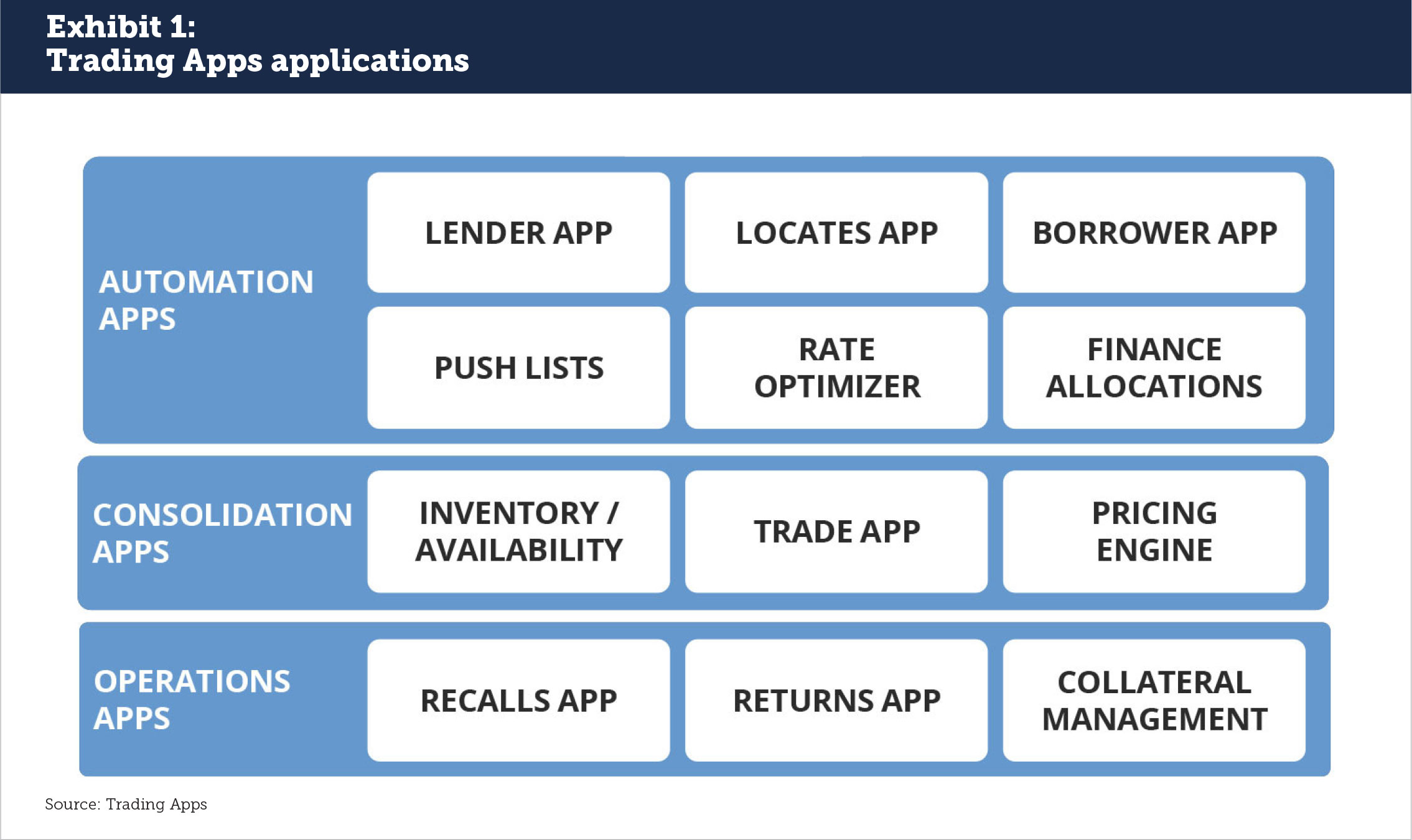Operational and trading efficiencies in securities lending have been driven by automation for decades now, yet there are always opportunities to improve. At the same time, integrating artificial intelligence (AI) has become a focus for firms looking to do away with administrative tasks in favor of faster deliverables and better use of human time. Indeed, Citi CEO Jane Fraser wrote last year that AI “has the potential to revolutionize all functions across our bank and the industry — changing how we write code, onboard clients, service customers, detect fraud, develop market research and strengthen compliance and controls.” When looking at automation and AI side by side, should securities finance choose one over the other, and when should they work side by side?
The benefits of using strategic automation to reduce or eliminate manual tasks have centered on allowing people to use their time on more value-added activities. Priorities have included executing pre-defined tasks, for example parsing multiple data fields to trade General Collateral securities in real-time; exceptions-based management for post-trade processing to avoid analyzing every trade; and reducing opportunities for human error in data processing. This has been a winning formula for the industry.
AI on the other hand uses technology to learn from data and make decisions without the need for additional programming. This opens up an opportunity for what Mary Callahan Erdoes, CEO of Asset and Wealth Management at J.P. Morgan, calls getting rid of “no joy work”: “rote repeatable work, we are getting rid of it at every front and it’s really important. Some of the analysts have said already they get two to four hours back in their day, and we really haven’t even begun to get that out across all of the forces.” If automation eliminates repetitive tasks and frees people up to be more effective in operations and trading, then AI could be seen as helping people enjoy their work with more strategic and creative thinking.
Two paths to efficiency
Firms looking to create more time for their staff and reduce operational errors have turned to technology with successful results. Executives understand the business benefits behind the implementation of any new technology platforms into their environment and weigh factors such as time-to-market, implementation complexity and build vs buy as part of their decision making. Automation is a trusted method when the task is the same day after day with identical data structures. An API with ten fields, like those for settlement instructions, can be read by a computer and successfully processed into its component parts. Extending that idea, reading emails with trade information for data fields to populate an execution screen has proven to be highly useful to traders, moving market participants away from emails to electronic systems.
These types of automation track a history of data from start to finish: if anyone asks later, there can be an audit trail that allows a human to observe what was received, what happened in the data processing phase and what the end result was. This information can be conveyed to internal compliance and risk teams, and given to regulators on demand. Controls are embedded in the process.
So far, AI has been on the other end of the audit spectrum. While AI, machine learning and natural language processing are superior for managing unstructured data, backtracking what happened can get lost in the process. AI learns as it goes, hence there may be no way to know what it has learned and why it made certain decisions as a result. This is a deep concern for line managers, risk professionals and regulators, especially when large financial services firms have seen fines adding up to the billions in recent years related to data quality issues. Right now, most of the securities industry is using AI for analysis and text generation. Few firms have moved to the stage of data implementations and decision making, partly because there is a reluctance to trust a system for which the execution metrics are unknown, and partly because regulators have told them not to.
These opinions may change at some point and the technology will be ready if the market decides to adopt it. In Finadium’s 2023 survey of collateral technology vendors, 70% of vendors said that they had active AI or machine learning projects in production or development. Compared to prior years, more of these projects have gone live in the category of decision support. It appears that the technology will be ready for implementation shortly after humans become more comfortable with AI making the final decision, but there are good reasons for that to never happen.
The Trading Apps viewpoint
Trading Apps, a provider of automation tools that use a set of rules to drive securities finance decision making and processing functions, would seem to preference automation over AI for their clients. According to Ross Levin, head of product management at Trading Apps, “the clear benefit of automation is the ability for anyone to see what is happening in both real-time and after-the-fact, and backtrack in case of poor data or unexpected outcome.” The Trading Apps business is built around this priority with twelve applications now using rules-based engines for trading and operational efficiencies (see Exhibit 1).

Some of Trading Apps’ products use automation to a point where it could be mistaken for AI. The firm’s Lender App processes unstructured borrower requests from Bloomberg messages, emails with or without attachments, and other sources (FTP, manual) and parses them with a 99% accuracy rate, allowing for an automatic rapid response. The same rules-based approach is used in the Locates App, which can run unattended, as opposed to typically-used portal and manual approvals. But these products are based on rules-based algorithms, not processes that decide what data are right or wrong for the purpose at hand. Neither app has any hidden logic and all decisions are transparent to users.
Levin noted however that AI has a place in the application mix as well: “While rules-based tools perform their roles, there are things they can’t do, like parsing messages without identifiers; that’s where firms can take advantage of AI to improve user outcomes.” He added that Trading Apps will be utilizing AWS AI capabilities for data collation, report generation, and other suitable tasks across all three of their product sets: TA Link, a messaging service addressing the pre-trade segment of the market; GLASS for trade capture, lifecycle management and a set of modular front office automation applications; and their new offering, GlobeNet, a back-office processing engine. In these cases, the use of self-learning tools can assist users in efficiency management and analysis better than a rules-based engine.
Trading Apps CTO, Stefan Bates, who recently participated in the AWS Financial Symposium in London, said that with the help of AWS Generative AI applications such as Bedrock, Trading Apps could transform its products’ querying capabilities by providing end users with the ability to ask any natural language question on the dataset.
Both automation and AI have a role in the trading and operations framework of securities finance market participants, but only where there is an auditable, transparent process behind their activities. Going it alone with AI can lead to trouble; market professionals in securities finance already cite errors in their AI queries based on their own knowledge of trading rules and regulations. But rules-based automation has its limitations as well when it comes to unstructured text or data. The best approach is to combine the two depending on the need and circumstance. As AI becomes more auditable, it is likely to grow in popularity. Until then, automation based on transparent rules delivers an outcome of certainty.
This article was sponsored by Trading Apps.


